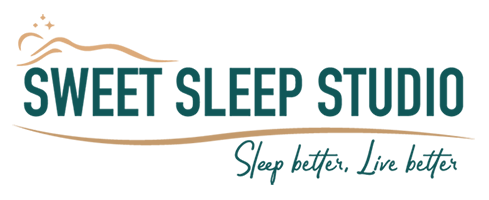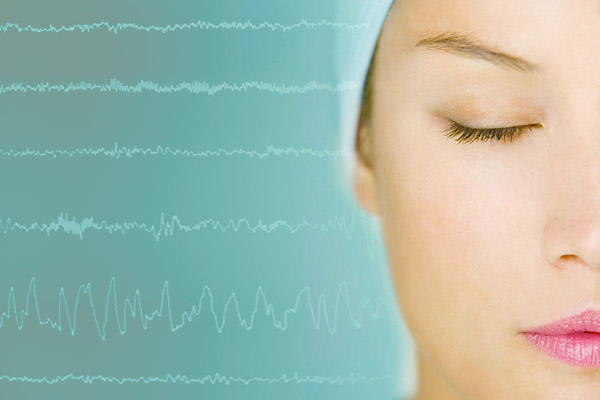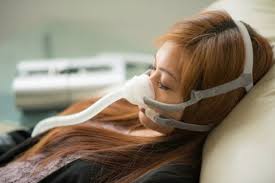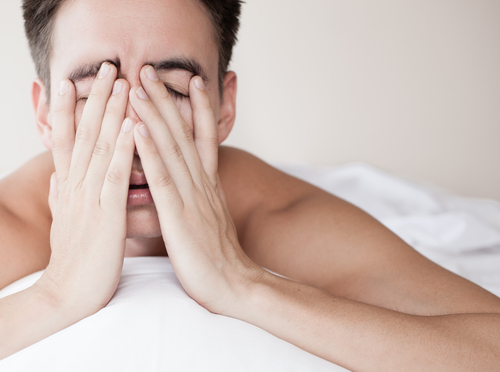[seasidetms_row data_shortcode_id=”mdc1h210ll” data_padding_bottom_mobile_v=”0″ data_padding_top_mobile_v=”0″ data_padding_bottom_mobile_h=”0″ data_padding_top_mobile_h=”0″ data_padding_bottom_tablet=”0″ data_padding_top_tablet=”0″ data_padding_bottom_laptop=”0″ data_padding_top_laptop=”0″ data_padding_bottom_large=”0″ data_padding_top_large=”0″ data_padding_bottom=”50″ data_padding_top=”0″ data_bg_parallax_ratio=”0.5″ data_bg_size=”cover” data_bg_attachment=”scroll” data_bg_repeat=”no-repeat” data_bg_position=”top center” data_color=”default” data_bot_style=”default” data_top_style=”default” data_padding_right=”3″ data_padding_left=”3″ data_width=”boxed”][seasidetms_column data_width=”1/1″ data_shortcode_id=”ob7p2prmra” data_bg_size=”cover” data_bg_attachment=”scroll” data_bg_repeat=”no-repeat” data_bg_position=”top center” data_animation_delay=”0″ data_border_style=”default”][seasidetms_image shortcode_id=”13625juhk8″ align=”center” animation_delay=”0″]5216|https://sweetsleepstudio.com/wp-content/uploads/2019/06/sleep_study600.jpg|full[/seasidetms_image][/seasidetms_column][/seasidetms_row][seasidetms_row data_shortcode_id=”8jj4uy2xyv” data_padding_bottom_mobile_v=”0″ data_padding_top_mobile_v=”0″ data_padding_bottom_mobile_h=”0″ data_padding_top_mobile_h=”0″ data_padding_bottom_tablet=”0″ data_padding_top_tablet=”0″ data_padding_bottom_laptop=”0″ data_padding_top_laptop=”0″ data_padding_bottom_large=”0″ data_padding_top_large=”0″ data_padding_bottom=”50″ data_padding_top=”0″ data_bg_parallax_ratio=”0.5″ data_bg_size=”cover” data_bg_attachment=”scroll” data_bg_repeat=”no-repeat” data_bg_position=”top center” data_color=”default” data_bot_style=”default” data_top_style=”default” data_padding_right=”3″ data_padding_left=”3″ data_width=”boxed”][seasidetms_column data_width=”1/1″ data_shortcode_id=”e6jbpkz5vx” data_bg_size=”cover” data_bg_attachment=”scroll” data_bg_repeat=”no-repeat” data_bg_position=”top center” data_animation_delay=”0″ data_border_style=”default”][seasidetms_text shortcode_id=”hknzvt2l56″ animation_delay=”0″]
If you are suffering from sleep troubles at night or experiencing troubles staying awake during the day, there is a good chance that you could have a sleep disorder.
Sleep disorders are medical conditions that can affect people’s sleep patterns and habits. Many sleep disorders can also cause complications to your health and general well being if left untreated. The best way to get to the bottom of your sleep troubles is to have a sleep study performed, which can help diagnose your disorder and lead to proper treatment options.
But what exactly is a sleep study? How are they performed? What can they tell you about your sleep? And how do you go about getting one?
Here we walk you through all of the important steps from when you should get a sleep study to complying with your recommended treatment.
Recognize You Have a Problem
If you’re reading this, chances are you already know that something is wrong with your sleep. But ask yourself, have you thoroughly explored your symptoms and what may be causing your sleep troubles? Many people experiencing sleep difficulties recognize the symptoms they experience during the day (fatigue, lack of energy, trouble concentrating, an overwhelming feeling of sleepiness, etc.), but may not be aware of what is occurring during sleep.
One of the best ways to find out what may be causing you sleep troubles is to talk with your bedpartner. Ask them if you snore loudly, if you move fitfully during sleep, if you stop breathing during sleep and resume with loud gasps or snorts, or any other concerning behavior you may exhibit while unconscious. Knowing what happens during sleep is just as important as recognizing your daytime sleepiness as it can help prevent misdiagnosis once you take the next step.
Another thing you can do is to begin keeping a sleep diary. In the diary, record important bits of information such as what time you went to bed, how long it took to fall asleep, how long you slept, how difficult it was to wake in the morning, how tired you felt the next day, and list amount of caffeinated or alcoholic beverages consumed during the day as well as medications you may have taken. Getting a head start on a sleep diary will be very helpful for when you discuss your troubles with your doctor.
Talk with Your Doctor
 Once you’re ready to get proactive about your sleep disturbances, you’ll want to discuss your symptoms with your primary care physician. If you’ve already been recording your problems in the sleep diary, then you’ll be ahead of the game, and be able to help your doctor give you the best-recommended course of action. Depending on the symptoms you describe along with any previously noted health concerns, your doctor can help decide if a sleep study is right for you.
Once you’re ready to get proactive about your sleep disturbances, you’ll want to discuss your symptoms with your primary care physician. If you’ve already been recording your problems in the sleep diary, then you’ll be ahead of the game, and be able to help your doctor give you the best-recommended course of action. Depending on the symptoms you describe along with any previously noted health concerns, your doctor can help decide if a sleep study is right for you.
If however, you do not have a primary care physician, or your insurance has specific requirements, you may need to schedule an appointment with a board certified sleep specialist before a sleep study can be scheduled.
Schedule a Sleep Study
You can either ask your doctor or sleep specialist to arrange a referral to a local sleep clinic, or you can schedule one yourself. Look for a sleep clinic that is close to your home or work (if you have to be to work early in the morning and don’t have time to run home first), one with a professional track record, and one that has a comfortable atmosphere resembling a nice hotel rather than a sterile hospital room.
Feel free to ask if you can swing by the clinic prior to your study and ask for a tour of the facilities.
Once you find a clinic that you would feel comfortable having your test at, get all necessary paperwork ahead of time and make sure it’s filled out before you show up for the test. This will allow more time for the sleep technician to spend with you discussing the procedures, rather than rushing through the paperwork and cutting down on valuable time.
Also check to make sure the sleep center is accredited by the American Academy of Sleep Medicine (AASM) to ensure that the highest standards of practice and patient care will be adminisitered during your test.
Have a Sleep Study
 So what is a sleep study, and what exactly does it entail? Depending on the disorder you are believed to have, your symptoms and health history, as well as your insurance requirements, a determination on which type of sleep study is necessary can be established.
So what is a sleep study, and what exactly does it entail? Depending on the disorder you are believed to have, your symptoms and health history, as well as your insurance requirements, a determination on which type of sleep study is necessary can be established.
There are four basic types of sleep studies:
- If moderate to severe obstructive sleep apnea is the most likely cause of your sleep troubles, and you don’t have certain comorbid health conditions, you may qualify for a home sleep test. For a home sleep test you show up to the clinic during the day and receive a small device with instructions on how to use it. At minimum, the equipment will include a small nasal cannula to measure airflow, a belt around the chest to measure breathing effort, another belt around the waist measure breathing effort from the diaphragm, and a finger clip to measure blood oxygen saturation.
- Polysomnogram (PSG). An overnight sleep study in which you are hooked to an assortment of equipment that records and measures a large variety of information including brain activity, eye movements, heart rate, blood pressure, body movements and more. PSGs are the go-to sleep study for almost all sleep disorders including .
If you spend the night at a clinic for an overnight PSG, you will have your own individual room that resembles a comfortable hotel room. You will be hooked to a variety of monitoring equipment by a Registered Polysomnographic Sleep Technologist (RPSGT) who will monitor and calibrate the equipment from an adjacent room. The RPSGT will also be on hand to answer any questions or concerns you may have while the study is being conducted.
In the morning the sleep technologist will wake you when the test is complete and you will be free to go home or to work. Many clinics have bathroom facilities available so that you can go through your normal morning rituals before going to work.
If you had a Home Sleep Test, you will simply return the HST device to the clinic the next day to have your study uploaded and interpreted.
Get Results
 It will usually take seven to ten days to get the results back from the clinic. The RPSGT that conducted your sleep study will have to prepare a report for interpretation by the sleep specialist. Based on the sleep specialist’s findings will determine best course of action for treatment of your disorder.
It will usually take seven to ten days to get the results back from the clinic. The RPSGT that conducted your sleep study will have to prepare a report for interpretation by the sleep specialist. Based on the sleep specialist’s findings will determine best course of action for treatment of your disorder.
If sleep apnea is discovered to be the primary cause of your sleep troubles, you may have to return to the clinic for a second sleep study called a CPAP titration. During this type of study you will be hooked up to the same equipment as you were for the PSG. However, this time you will also be using a continuous positive airway pressure (CPAP) device while sleeping to determine the air pressure levels needed to eliminate your apnea events as well as find a mask that is comfortable for you to wear, and meets your individual breathing needs.
Occasionally, contingent upon your insurance specifications and if sleep apnea is determined early in the study, you may be able to have the CPAP titration study done on the same night as your PSG.
Get Treatment
Your recommended treatment depends upon the sleep disorder, and the severity of the disorder, discovered during the study. With sleep apnea you may either be prescribed a CPAP device or get referred to a dentist for a specially designed oral appliance. If neither of these treatments is found tolerable for you, there are alternative treatments available. You can learn about alternative treatments for sleep apnea here.
For other disorders such as circadian rhythm disorders and insomnia, the first line of therapy is often cognitive behavioral therapy with a clinical psychologist and behavioral sleep medicine specialist.
Other sleep disorders may be treated with pharmacological therapies, lifestyle changes, treating another medical condition that may be causing it, or a combination of treatment types. As there are a variety of sleep disorders, there is also a range of treatment options.
Comply with Therapy
By now you have spent a lot of time (and probably money) discovering and diagnosing your condition. But the battle doesn’t end there. Some of these sleep disorders can be permanently eliminated through treatment, while others may be with you for the rest of your life.
Conditions such as sleep apnea are often a lifetime disorder and will require nightly intervention to keep you from experiencing those terrible daytime symptoms again. Whatever recommended therapy you are given, adhering to the advice of the professionals is the best thing you can do.
For instance, if you are issued a CPAP device to treat sleep apnea, you should not only wear it every night, but make sure to keep it clean and replace the various parts whenever necessary to make sure that it is functioning at the highest level of efficiency.
If you live in Kansas and are ready to take back your sleep, contact Sweet Sleep Studio @ to connect with Sleep Specialist, Dr. Abid Bhat, who can help you determine if a sleep study is right for you.
[/seasidetms_text][/seasidetms_column][/seasidetms_row][seasidetms_row data_shortcode_id=”gwf9n9ckq8″ data_padding_bottom_mobile_v=”0″ data_padding_top_mobile_v=”0″ data_padding_bottom_mobile_h=”0″ data_padding_top_mobile_h=”0″ data_padding_bottom_tablet=”0″ data_padding_top_tablet=”0″ data_padding_bottom_laptop=”0″ data_padding_top_laptop=”0″ data_padding_bottom_large=”0″ data_padding_top_large=”0″ data_padding_bottom=”50″ data_padding_top=”0″ data_bg_parallax_ratio=”0.5″ data_bg_size=”cover” data_bg_attachment=”scroll” data_bg_repeat=”no-repeat” data_bg_position=”top center” data_color=”default” data_bot_style=”default” data_top_style=”default” data_padding_right=”3″ data_padding_left=”3″ data_width=”boxed”][seasidetms_column data_width=”1/1″ data_shortcode_id=”aam2q1qmvc” data_bg_size=”cover” data_bg_attachment=”scroll” data_bg_repeat=”no-repeat” data_bg_position=”top center” data_animation_delay=”0″ data_border_style=”default”][seasidetms_button shortcode_id=”741td7wt0s” button_link=”https://sweetsleepstudio.com/contact-us/” button_target=”blank” button_text_align=”center” button_font_family=”PT+Serif:400,400italic,700,700italic” button_font_weight=”default” button_font_style=”default” button_text_transform=”default” button_border_style=”double” button_bg_color=”#5e71ba” button_text_color=”#01010a” animation_delay=”0″]Contact Sweet Sleep Studio[/seasidetms_button][/seasidetms_column][/seasidetms_row][seasidetms_row data_shortcode_id=”hc4y5ho80m” data_padding_bottom_mobile_v=”0″ data_padding_top_mobile_v=”0″ data_padding_bottom_mobile_h=”0″ data_padding_top_mobile_h=”0″ data_padding_bottom_tablet=”0″ data_padding_top_tablet=”0″ data_padding_bottom_laptop=”0″ data_padding_top_laptop=”0″ data_padding_bottom_large=”0″ data_padding_top_large=”0″ data_padding_bottom=”50″ data_padding_top=”0″ data_bg_parallax_ratio=”0.5″ data_bg_size=”cover” data_bg_attachment=”scroll” data_bg_repeat=”no-repeat” data_bg_position=”top center” data_color=”default” data_bot_style=”default” data_top_style=”default” data_padding_right=”3″ data_padding_left=”3″ data_width=”boxed”][seasidetms_column data_width=”1/1″ data_shortcode_id=”gctveq0qmp” data_bg_size=”cover” data_bg_attachment=”scroll” data_bg_repeat=”no-repeat” data_bg_position=”top center” data_animation_delay=”0″ data_border_style=”default”]
[seasidetms_social facebook=”true” twitter=”true” pinterest=”true” type=”horizontal” animation_delay=”0″ shortcode_id=”sh1lsq6twg”]
[/seasidetms_column][/seasidetms_row]




